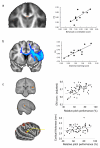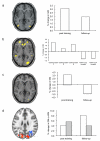Plasticity in gray and white: neuroimaging changes in brain structure during learning
- PMID: 22426254
- PMCID: PMC3660656
- DOI: 10.1038/nn.3045
Plasticity in gray and white: neuroimaging changes in brain structure during learning
Abstract
Human brain imaging has identified structural changes in gray and white matter that occur with learning. However, ascribing imaging measures to underlying cellular and molecular events is challenging. Here we review human neuroimaging findings of structural plasticity and then discuss cellular and molecular level changes that could underlie observed imaging effects. Greater dialog between researchers in these different fields would help to facilitate cross-talk between cellular and systems level explanations of how learning sculpts brain structure.
Figures



References
-
- He Y, Chen ZJ, Evans AC. Small-world anatomical networks in the human brain revealed by cortical thickness from MRI. Cereb Cortex. 2007;17:2407–2419. - PubMed
-
- Bermudez P, Evans AC, Lerch JP, Zatorre RJ. Neuro-anatomical correlates of musicianship as revealed by cortical thickness and voxel-based morphometry. Cerebral Cortex. 2009;19:1583–1596. - PubMed
-
- Schneider P, et al. Morphology of Heschl’s gyrus reflects enhanced activation in the auditory cortex of musicians. Nature Neuroscience. 2002;5:688–694. - PubMed
Publication types
MeSH terms
Grants and funding
LinkOut - more resources
Full Text Sources
Other Literature Sources

